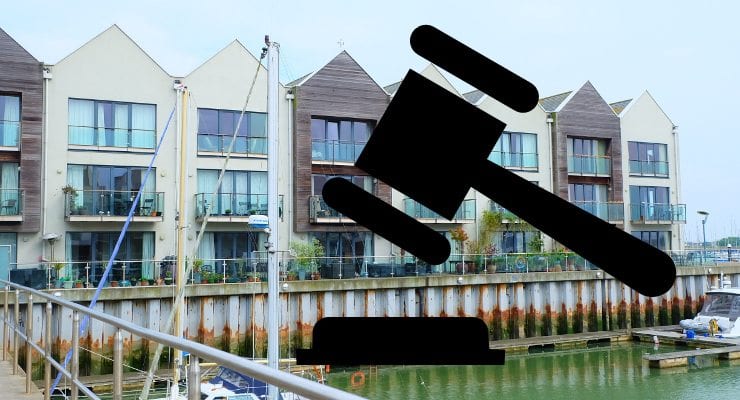The Plague of Prime Central London – The real effect of stamp duty.
Experienced estate agent based in Knightsbridge and anonymous guest writer for mypropertyeye.com gives us his thoughts on SDLT.
Prime Central London is a term that is growing to encompass more and more of the capital’s postcodes, but there is arguably one that still is in a league of its own. SW1X (Knightsbridge/Belgravia) includes some of the most famous and expensive Streets and Squares in the whole of London, Wilton Crescent, Lowndes Square, Belgrave Square, Cadogan Square, Lennox Gardens to name but a few. Moreover, it includes both the most famous shop and the most expensive residential building not only in London, but in the world, namely Harrods and Number One Hyde Park. This postcode then will be the focus of this look into the real effect of the increase in Stamp Duty Land Tax on the 4th December 2014
The best part of a year on from the changes and the effect on Prime Central London has most definitely been felt. Perhaps most keenly felt by Estate Agents, many of whom have spent the year twiddling their thumbs while they wait for things to “get better”, waiting for the election to be over, or praying for everyone to return from their summer holidays. It does appear that buyers and sellers have finally reached a “stale-mate”. Perhaps it was always coming when you consider the capital value levels present in this area; an average 2 bedroom flat sells for approximately three to four million pounds. However, the not insignificant increase in Stamp Duty at this level has irrefutably hastened the moment at which buyers take a step back and really consider how much they are spending and for what.
The great problem is that Prime Central London in general and SW1X specifically does not exactly follow basic economic principles. Anyone who did A-level Economics will remember that the first principal they were taught, with of course the aid of a diagram, was that of supply and demand on price. Should demand exceed supply (as it has done in this area for a number of years now) then price will rise and should demand fall and supply increase then logically price should fall. Well, the rise in STDL has effectively increased the price and has definitely caused a fall in demand. While at the same time the changes, or possible changes, set down by Government, on properties held in “offshore companies”, non-domicile status and off-setting rental income against debt repayment has caused a rise in supply. And yet there has been, at least so far, little to no reduction in vendor’s expectations and asking price.
The explanation for this is simple; those that own in SW1X very rarely need to sell. With a few exceptions, the majority of vendors in SW1X are not in a position in which they must rush to liquidate their asset and instead are willing to wait for the price they want and feel they deserve. The combined effect of this increase in costs for buyers and refusal to accommodate for it by the sellers has of course lead to a significant reduction in transactions. To be precise approximately 34.4% fewer transactions in SW1X compared to this time last year. For agents this is the very worst sort of market, one with no liquidity, and the larger agents who rely on a higher turn over of transactions are suffering in particular, but then so surely in the Government’s treasury. It is interesting to wonder whether our political leaders would have introduced the changes had they foreseen that the increase in tax would have led to such a reduction of taxable transactions and what must be a fall in their revenue.
What does this really mean for SW1X and Prime Central London though? Well, if I had the answer to that with irrefutable certainty then I would be far too wealthy to care anymore, but an educated guess would make me think that there is no reason to panic just yet. At present the reality is that it is not a seller’s market, there is simply too little demand and too much supply, but then it is evidently a buyers market. Perhaps not every property, as I mentioned only a very few of the properties ever for sale in SW1X “need” to be sold, but there are always some and right now they offer a serious opportunity. After all, even with the increase in Stamp Duty and the changes on the tax breaks of international buyers and residents, the UK remains an attractive place to invest and the values will certainly begin to grow again. After all, the tax levels are still relatively low compared to many other leading countries, the economy is looking more and more positive despite the rest of Europe, and the security of living and as a place to bring up your children (whatever your nationality) is second to none. These factors do indicate a brighter future and if we are honest, the best properties, correctly and sensibly priced, do still sell and sell well.
So, to any seller’s out there I would say this: if you are calling the top of the market I will not disagree with you per se, but I would remind you that the top may have already been and that you must exercise a little patience with your sale and make sure you instruct the correct agent and listen to them. You need one who is going to put in the required work to make sure you achieve the sale you desire. To sell now an agent must work harder than ever before, gone are the days it seems when people can wait for the phone to ring. As my superior has always told me: “Be proactive and win, not reactive and lose.” Never has the saying been more true.









